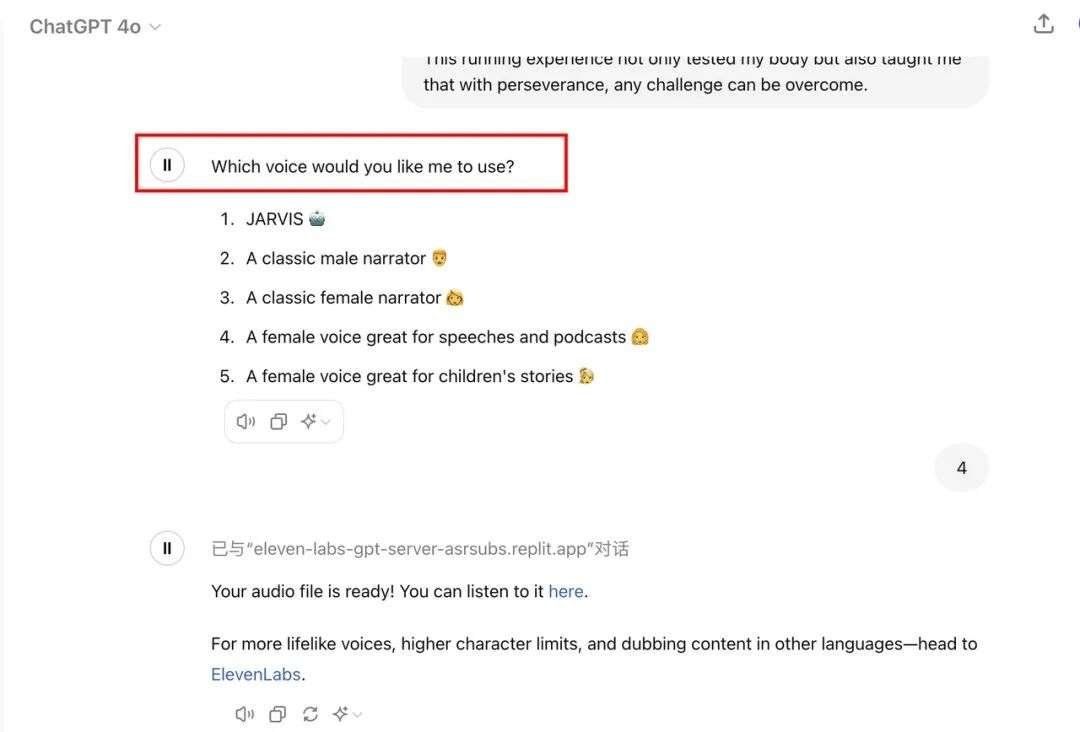背景
之前在学习OAuth2时,我就有一个疑惑,OAuth2中有太多的配置、服务类都标注了@Deprecated,如下:


显然这些写法已经过时了,那么官方推荐的最新写法是什么样的呢?当时我没有深究这些,我以为我放过了它,它就能放过我,谁曾想不久之后,命运的大手不由分说的攥紧了我,让我不得不直面自己的困惑。
最近我接了个大活,对公司的Java后端技术框架进行版本升级,将SpringBoot的版本从2.X升到3.X,JDK从1.8升到17,在对框架的父工程中的依赖版本进行升级之后,接下来要做的就是对已有的公共服务/组件进行升级了,比如GateWay, 流程引擎,基础平台,认证服务等。其他的服务升级都还算有惊无险,但是升级认证服务OAuth时,不夸张的说,我真是被折腾得死去活来。
相比于SpringBoot2.X,3.X对于OAuth的配置几乎是进行了巅覆式的变更,很多之前我们熟知的配置方法,要么是换了形式,要么是换了位置,想要配得和2.X一样的效果太难了。好在经历了一番坎坷后,我终于把它给整理出来了,借着OAuth升版的机会,我也终于弄明白了最版的配置是什么样的。
代码实践
伴随着JDK和SpringBoot的版本升级,Spring Security也需要进行相应的升级,这直接导致了适用于SpringBoot2.X的相关OAuth配置变得不可用,甚至我们耳熟能详的配置类如AuthorizationServerConfigurerAdapter, WebSecurityConfigurerAdapter等都被删除了,下面就对比着SpringBoot2.X,详细说下3.X中对于配置做了哪些变更。
一、依赖包的变化
在SpringBoot2.X中要实现OAuth服务,需要引入以下依赖:
<dependency>
<groupId>org.springframework.boot</groupId>
<artifactId>spring-boot-starter-security</artifactId>
<version>2.3.2.RELEASE</version>
</dependency>
<dependency>
<groupId>org.springframework.cloud</groupId>
<artifactId>spring-cloud-starter-oauth2</artifactId>
<version>2.2.5.RELEASE</version>
</dependency>而在SpringBoot3.X中,需要引入以下依赖包:
<dependency>
<groupId>org.springframework.boot</groupId>
<artifactId>spring-boot-starter-security</artifactId>
</dependency>
<dependency>
<groupId>org.springframework.security</groupId>
<artifactId>spring-security-oauth2-authorization-server</artifactId>
<version>1.0.0</version>
</dependency>
<dependency>
<groupId>org.springframework.security</groupId>
<artifactId>spring-security-oauth2-core</artifactId>
</dependency>二、支持模式的变化
新版的spring-security-oauth2-authorization-server依赖包中,仅实现了授权码模式,要想使用之前的用户名密码模式,客户端模式等,还需要手动扩展,扩展模式需要实现这三个接口:
AuthenticationConverter (用于将认证请求转换为标准的 Authentication 对象)
AuthenticationProvider (用于定义如何验证用户的认证信息)
OAuth2AuthorizationGrantAuthenticationToken(将认证对象转换为系统内部可识别的形式)
三、数据库表的变化
SpringBoot2.X版本时,OAuth存储客户信息的表结构如下:
create table oauth_client_details (
client_id VARCHAR(256) PRIMARY KEY,
resource_ids VARCHAR(256),
client_secret VARCHAR(256),
scope VARCHAR(256),
authorized_grant_types VARCHAR(256),
web_server_redirect_uri VARCHAR(256),
authorities VARCHAR(256),
access_token_validity INTEGER,
refresh_token_validity INTEGER,
additional_information VARCHAR(4096),
autoapprove VARCHAR(256)
);升级为SpringBoot3.X后,客户信息表结构如下:
CREATE TABLE oauth2_registered_client (
id varchar(100) NOT NULL,
client_id varchar(100) NOT NULL,
client_id_issued_at timestamp DEFAULT CURRENT_TIMESTAMP NOT NULL,
client_secret varchar(200) DEFAULT NULL,
client_secret_expires_at timestamp DEFAULT NULL,
client_name varchar(200) NOT NULL,
client_authentication_methods varchar(1000) NOT NULL,
authorization_grant_types varchar(1000) NOT NULL,
redirect_uris varchar(1000) DEFAULT NULL,
scopes varchar(1000) NOT NULL,
client_settings varchar(2000) NOT NULL,
token_settings varchar(2000) NOT NULL,
PRIMARY KEY (id)
);四、链接的变化
旧版本的OAuth服务中,相关的认证接接口的url都是/oauth/*,如/oauth/token /oauth/authorize,而升级到新版后,所有接口的url都变成了/oauth2/*,在配置客户端时需要格外注意。
五、配置的变化
接下来就是重头戏:配置的变化,为了更直观的展示SprinBoot在2.X和3.X对于配置的变化,我将把一套2.X的OAuth配置以及它转换成3.X的配置都贴出来,配置中涉及认证自动审批、内存模式和数据库模式,Token的过期时间,Token的JWT转换,Password的加密,自定义登陆页,客户端的授权方式等。
1、SpringBoot2.X的配置
import org.springframework.context.annotation.Bean;
import org.springframework.context.annotation.Configuration;
import org.springframework.security.authentication.AuthenticationManager;
import org.springframework.security.core.userdetails.UserDetailsService;
import org.springframework.security.oauth2.config.annotation.configurers.ClientDetailsServiceConfigurer;
import org.springframework.security.oauth2.config.annotation.web.configuration.AuthorizationServerConfigurerAdapter;
import org.springframework.security.oauth2.config.annotation.web.configuration.EnableAuthorizationServer;
import org.springframework.security.oauth2.config.annotation.web.configurers.AuthorizationServerEndpointsConfigurer;
import org.springframework.security.oauth2.config.annotation.web.configurers.AuthorizationServerSecurityConfigurer;
import org.springframework.security.oauth2.provider.token.AuthorizationServerTokenServices;
import org.springframework.security.oauth2.provider.token.DefaultAccessTokenConverter;
import org.springframework.security.oauth2.provider.token.DefaultTokenServices;
import org.springframework.security.oauth2.provider.token.TokenEnhancerChain;
import org.springframework.security.oauth2.provider.token.TokenStore;
import org.springframework.security.oauth2.provider.token.store.JwtAccessTokenConverter;
import javax.annotation.Resource;
import javax.sql.DataSource;
import java.util.Arrays;
/**
*
* @author leixiyueqi
* @since 2023/12/3 22:00
*/
@EnableAuthorizationServer
@Configuration
public class OAuth2Configuration extends AuthorizationServerConfigurerAdapter {
@Resource
private AuthenticationManager manager;
private final MD5PasswordEncoder encoder = new MD5PasswordEncoder();
@Resource
UserDetailsService service;
@Resource
private DataSource dataSource;
@Resource
TokenStore tokenStore;
/**
* 这个方法是对客户端进行配置,比如秘钥,唯一id,,一个验证服务器可以预设很多个客户端,
* 之后这些指定的客户端就可以按照下面指定的方式进行验证
* @param clients 客户端配置工具
*/
@Override
public void configure(ClientDetailsServiceConfigurer clients) throws Exception {
clients.jdbc(dataSource);
}
/**
* 以内存的方式设置客户端方法
@Override
public void configure(ClientDetailsServiceConfigurer clients) throws Exception {
clients
.inMemory() //这里我们直接硬编码创建,当然也可以像Security那样自定义或是使用JDBC从数据库读取
.withClient("client") //客户端名称,随便起就行
.secret(encoder.encode("123456")) //只与客户端分享的secret,随便写,但是注意要加密
.autoApprove(false) //自动审批,这里关闭,要的就是一会体验那种感觉
.scopes("read", "write") //授权范围,这里我们使用全部all
.autoApprove(true) // 这个为true时,可以自动授权。
.redirectUris("http://127.0.0.1:19210/leixi/login/oauth2/code/leixi-client",
"http://127.0.0.1:8081/login/oauth2/code/client-id-1",
"http://127.0.0.1:19210/leixi/callback")
.authorizedGrantTypes("client_credentials", "password", "implicit", "authorization_code", "refresh_token");
//授权模式,一共支持5种,除了之前我们介绍的四种之外,还有一个刷新Token的模式
}
*/
// 令牌端点的安全配置,比如/oauth/token对哪些开放
@Override
public void configure(AuthorizationServerSecurityConfigurer security) {
security
.passwordEncoder(encoder) //编码器设定为BCryptPasswordEncoder
.allowFormAuthenticationForClients() //允许客户端使用表单验证,一会我们POST请求中会携带表单信息
.checkTokenAccess("permitAll()"); //允许所有的Token查询请求
}
//令牌访问端点的配置
@Override
public void configure(AuthorizationServerEndpointsConfigurer endpoints) {
endpoints
.userDetailsService(service)
.authenticationManager(manager)
.tokenServices(tokenServices());
//由于SpringSecurity新版本的一些底层改动,这里需要配置一下authenticationManager,才能正常使用password模式
endpoints.pathMapping("/oauth/confirm_access","/custom/confirm_access");
}
// 设置token的存储,过期时间,添加附加信息等
@Bean
public AuthorizationServerTokenServices tokenServices() {
DefaultTokenServices services = new DefaultTokenServices();
services.setReuseRefreshToken(true);
services.setTokenStore(tokenStore);
services.setAccessTokenValiditySeconds(120); // 设置令牌有效时间
services.setRefreshTokenValiditySeconds(60*5); //设计刷新令牌的有效时间
TokenEnhancerChain tokenEnhancerChain = new TokenEnhancerChain();
tokenEnhancerChain.setTokenEnhancers(Arrays.asList(new CustomTokenEnhancer(), accessTokenConverter()));
services.setTokenEnhancer(tokenEnhancerChain);
return services;
}
// 对token信息进行JWT加密
@Bean
public JwtAccessTokenConverter accessTokenConverter() {
// 将自定义的内容封装到access_token中
DefaultAccessTokenConverter defaultAccessTokenConverter = new DefaultAccessTokenConverter();
defaultAccessTokenConverter.setUserTokenConverter(new CustomerUserAuthenticationConverter());
JwtAccessTokenConverter converter = new JwtAccessTokenConverter();
converter.setAccessTokenConverter(defaultAccessTokenConverter);
converter.setSigningKey("密钥");
return converter;
}
}
import com.leixi.auth2.service.UserDetailServiceImpl;
import org.springframework.beans.factory.annotation.Autowired;
import org.springframework.context.annotation.Bean;
import org.springframework.context.annotation.Configuration;
import org.springframework.data.redis.connection.RedisConnectionFactory;
import org.springframework.security.authentication.AuthenticationManager;
import org.springframework.security.config.annotation.authentication.builders.AuthenticationManagerBuilder;
import org.springframework.security.config.annotation.web.builders.HttpSecurity;
import org.springframework.security.config.annotation.web.configuration.WebSecurityConfigurerAdapter;
import org.springframework.security.oauth2.provider.token.TokenStore;
import org.springframework.security.oauth2.provider.token.store.redis.RedisTokenStore;
/**
*
* @author leixiyueqi
* @since 2023/12/3 22:00
*/
@Configuration
public class SecurityConfiguration extends WebSecurityConfigurerAdapter {
private static final String loginUrl = "/login";
/**
* 注意,当在内存中获取用户信息时,就不需要创建UserDetailService的实现类了
*
*/
@Autowired
private UserDetailServiceImpl userService;
@Autowired
private RedisConnectionFactory redisConnectionFactory;
@Bean
public MD5PasswordEncoder passwordEncoder() {
return new MD5PasswordEncoder();
}
@Override
protected void configure(HttpSecurity http) throws Exception {
http
// http security 要拦截的url,这里这拦截,oauth2相关和登录登录相关的url,其他的交给资源服务处理
.authorizeRequests()
.antMatchers( "/oauth/**","/**/*.css", "/**/*.ico", "/**/*.png", "/**/*.jpg", "/**/*.svg", "/login",
"/**/*.js", "/**/*.map",loginUrl, "/user/*","/base-grant.html")
.permitAll()
.anyRequest()
.authenticated();
// post请求要设置允许跨域,然后会报401
http.csrf().ignoringAntMatchers("/login", "/logout", "/unlock/apply");
// 表单登录
http.formLogin()
// 登录页面
.loginPage(loginUrl)
// 登录处理url
.loginProcessingUrl("/login");
http.httpBasic();
}
@Override
protected void configure(AuthenticationManagerBuilder auth) throws Exception {
auth.userDetailsService(userService).passwordEncoder(passwordEncoder());
}
/**
* 以内存的方式载入用户信息
@Override
protected void configure(AuthenticationManagerBuilder auth) throws Exception {
BCryptPasswordEncoder encoder = new BCryptPasswordEncoder();
auth.inMemoryAuthentication() //直接创建一个静态用户
.passwordEncoder(encoder)
.withUser("leixi").password(encoder.encode("123456")).roles("USER");
}
@Bean
@Override
public UserDetailsService userDetailsServiceBean() throws Exception {
return super.userDetailsServiceBean();
}
*/
@Bean //这里需要将AuthenticationManager注册为Bean,在OAuth配置中使用
@Override
public AuthenticationManager authenticationManagerBean() throws Exception {
return super.authenticationManagerBean();
}
//通过redis存储token
@Bean
public TokenStore tokenStore() {
return new RedisTokenStore(redisConnectionFactory);
}
}
import org.springframework.security.core.Authentication;
import org.springframework.security.core.userdetails.UserDetails;
import org.springframework.security.oauth2.provider.token.DefaultUserAuthenticationConverter;
import java.util.Map;
public class CustomerUserAuthenticationConverter extends DefaultUserAuthenticationConverter {
@Override
public Map<String, ?> convertUserAuthentication(Authentication authentication) {
Map mapResp = super.convertUserAuthentication(authentication);
try {
UserDetails user = (UserDetails)authentication.getPrincipal();
if (user != null) {
mapResp.put("loginName", user.getUsername());
mapResp.put("content", "测试在accessToken中添加附加信息");
mapResp.put("authorities","hahahaha");
}
} catch (Exception e) {
e.printStackTrace();
}
return mapResp;
}
}
/**
* 密码实现类,允许开发人员自由设置密码加密
*
* @author leixiyueqi
* @since 2023/12/3 22:00
*/
public class MD5PasswordEncoder implements PasswordEncoder {
@Override
public String encode(CharSequence rawPassword) {
try {
MessageDigest md5 = MessageDigest.getInstance("MD5");
byte[] digest = md5.digest(rawPassword.toString().getBytes("UTF-8"));
String pass = new String(Hex.encode(digest));
return pass;
} catch (Exception e) {
throw new RuntimeException("Failed to encode password.", e);
}
}
@Override
public boolean matches(CharSequence rawPassword, String encodedPassword) {
return encodedPassword.equals(encode(rawPassword));
}
}
看得出来,SpringBoot2.X中SpringSecurityConfig的配置与OAuth2Configuration的配置有种相辅相成的感觉,但对于初学者来说,会觉得很割裂,不知道哪些东西该配在哪个文件里。
2、Springboot3.X的配置
package com.leixi.auth2.config;
import com.leixi.auth2.custom.OAuth2PasswordAuthenticationConverter;
import com.leixi.auth2.custom.OAuth2PasswordAuthenticationProvider;
import com.nimbusds.jose.jwk.JWKSet;
import com.nimbusds.jose.jwk.RSAKey;
import com.nimbusds.jose.jwk.source.ImmutableJWKSet;
import com.nimbusds.jose.jwk.source.JWKSource;
import com.nimbusds.jose.proc.SecurityContext;
import jakarta.annotation.Resource;
import org.springframework.beans.factory.annotation.Autowired;
import org.springframework.context.annotation.Bean;
import org.springframework.context.annotation.Configuration;
import org.springframework.core.annotation.Order;
import org.springframework.jdbc.core.JdbcTemplate;
import org.springframework.security.authentication.dao.DaoAuthenticationProvider;
import org.springframework.security.config.Customizer;
import org.springframework.security.config.annotation.web.builders.HttpSecurity;
import org.springframework.security.config.annotation.web.configuration.EnableWebSecurity;
import org.springframework.security.core.userdetails.UserDetailsService;
import org.springframework.security.oauth2.jwt.JwtDecoder;
import org.springframework.security.oauth2.jwt.JwtEncoder;
import org.springframework.security.oauth2.jwt.NimbusJwtEncoder;
import org.springframework.security.oauth2.server.authorization.client.JdbcRegisteredClientRepository;
import org.springframework.security.oauth2.server.authorization.client.RegisteredClientRepository;
import org.springframework.security.oauth2.server.authorization.config.annotation.web.configuration.OAuth2AuthorizationServerConfiguration;
import org.springframework.security.oauth2.server.authorization.config.annotation.web.configurers.OAuth2AuthorizationServerConfigurer;
import org.springframework.security.oauth2.server.authorization.settings.AuthorizationServerSettings;
import org.springframework.security.oauth2.server.authorization.token.DelegatingOAuth2TokenGenerator;
import org.springframework.security.oauth2.server.authorization.token.JwtGenerator;
import org.springframework.security.oauth2.server.authorization.token.OAuth2AccessTokenGenerator;
import org.springframework.security.oauth2.server.authorization.token.OAuth2RefreshTokenGenerator;
import org.springframework.security.oauth2.server.authorization.token.OAuth2TokenGenerator;
import org.springframework.security.oauth2.server.authorization.web.authentication.DelegatingAuthenticationConverter;
import org.springframework.security.oauth2.server.authorization.web.authentication.OAuth2AuthorizationCodeAuthenticationConverter;
import org.springframework.security.oauth2.server.authorization.web.authentication.OAuth2ClientCredentialsAuthenticationConverter;
import org.springframework.security.oauth2.server.authorization.web.authentication.OAuth2RefreshTokenAuthenticationConverter;
import org.springframework.security.web.SecurityFilterChain;
import org.springframework.security.web.authentication.LoginUrlAuthenticationEntryPoint;
import java.security.KeyPair;
import java.security.KeyPairGenerator;
import java.security.interfaces.RSAPrivateKey;
import java.security.interfaces.RSAPublicKey;
import java.util.Arrays;
import java.util.UUID;
/**
* OAuth的配置
*
* @author leixiyueqi
* @since 2024/9/28 22:00
*/
@Configuration
@EnableWebSecurity
public class OAuth2JdbcConfiguration {
@Autowired
private MD5PasswordEncoder passwordEncoder;
@Resource
private UserDetailsService userDetailService;
@Autowired
private JdbcTemplate jdbcTemplate;
@Autowired
private CustomTokenEnhancer customTokenEnhancer;
private static final String loginUrl = "/loginpage.html";
@Bean
public RegisteredClientRepository registeredClientRepository() {
JdbcRegisteredClientRepository jdbcRegisteredClientRepository = new JdbcRegisteredClientRepository(jdbcTemplate);
return jdbcRegisteredClientRepository;
}
/**
* 在内存中获取用户信息的方式
@Bean
public UserDetailsService userDetailsService() {
UserDetails userDetails = User.builder()
.username("leixi")
.roles("USER")
.password(passwordEncoder.encode("123456"))
.build();
return new InMemoryUserDetailsManager(userDetails);
}
*/
/**
* 在内存中获取客户端信息的方式,还可以用于客户端信息的入库
*
@Bean
public RegisteredClientRepository registeredClientRepository() {
JdbcRegisteredClientRepository jdbcRegisteredClientRepository = new JdbcRegisteredClientRepository(jdbcTemplate);
RegisteredClient registeredClient = RegisteredClient.withId(UUID.randomUUID().toString())
.clientId("client")
.clientSecret(passwordEncoder.encode( "123456"))
.clientAuthenticationMethod(ClientAuthenticationMethod.CLIENT_SECRET_POST)
.clientAuthenticationMethod(ClientAuthenticationMethod.CLIENT_SECRET_BASIC)
.authorizationGrantType(AuthorizationGrantType.AUTHORIZATION_CODE)
.authorizationGrantType(AuthorizationGrantType.REFRESH_TOKEN)
.authorizationGrantType(AuthorizationGrantType.CLIENT_CREDENTIALS)
.authorizationGrantType(AuthorizationGrantType.PASSWORD)
.redirectUri("http://127.0.0.1:19210/leixi/login/oauth2/code/leixi-client")
.redirectUri("http://127.0.0.1:8081/login/oauth2/code/client-id-1")
.redirectUri("http://127.0.0.1:19210/leixi/callback")
.scope("read")
.scope("write")
// 登录成功后对scope进行确认授权
.clientSettings(ClientSettings.builder().requireAuthorizationConsent(false).build())
.tokenSettings(TokenSettings.builder().accessTokenFormat(OAuth2TokenFormat.SELF_CONTAINED)
.accessTokenTimeToLive(Duration.ofHours(24))
.refreshTokenTimeToLive(Duration.ofHours(24)).build())
.build();
jdbcRegisteredClientRepository.save(registeredClient); //客户端信息入库
return new InMemoryRegisteredClientRepository(registeredClient);
}
*/
@Bean
public SecurityFilterChain defaultSecurityFilterChain(HttpSecurity http) throws Exception {
http.authorizeHttpRequests((requests) -> requests
.requestMatchers( "/oauth/*","/*/*.css", "/*/*.ico", "/*/*.png", "/*/*.jpg", "/*/*.svg", "/login",
"/*/*.js", "/*/*.map",loginUrl, "/user/*","/base-grant.html").permitAll() // 允许所有用户访问这些路径
.anyRequest().authenticated()
);
http.csrf(csrf -> csrf.ignoringRequestMatchers("/login", "/logout", "/unlock/apply")); // 禁用CSRF保护
// 表单登录
http.formLogin(formlogin -> formlogin
.loginPage(loginUrl)
.loginProcessingUrl("/login"))
.httpBasic(httpBasic -> {})
.authenticationProvider(daoAuthenticationProvider());
return http.build();
}
@Bean
public DaoAuthenticationProvider daoAuthenticationProvider() {
DaoAuthenticationProvider customerDaoAuthenticationProvider = new DaoAuthenticationProvider();
// 设置userDetailsService
customerDaoAuthenticationProvider.setUserDetailsService(userDetailService);
// 禁止隐藏用户未找到异常
customerDaoAuthenticationProvider.setHideUserNotFoundExceptions(false);
// 使用MD5进行密码的加密
customerDaoAuthenticationProvider.setPasswordEncoder(passwordEncoder);
return customerDaoAuthenticationProvider;
}
@Bean
public AuthorizationServerSettings authorizationServerSettings() {
return AuthorizationServerSettings.builder()
.build();
}
@Bean
@Order(1)
public SecurityFilterChain authorizationServerSecurityFilterChain(HttpSecurity http) throws Exception {
//应用了默认的安全配置,这些配置支持OAuth2授权服务器的功能。
OAuth2AuthorizationServerConfiguration.applyDefaultSecurity(http);
http.getConfigurer(OAuth2AuthorizationServerConfigurer.class)
// 自定义用户名密码的授权方式
.tokenEndpoint((tokenEndpoint) -> tokenEndpoint
.accessTokenRequestConverter(new DelegatingAuthenticationConverter(Arrays.asList(
new OAuth2AuthorizationCodeAuthenticationConverter(),
new OAuth2RefreshTokenAuthenticationConverter(),
new OAuth2ClientCredentialsAuthenticationConverter(),
new OAuth2PasswordAuthenticationConverter() //添加密码模式的授权方式
))).authenticationProviders((customProviders) -> {
// 自定义认证提供者
customProviders.add(new OAuth2PasswordAuthenticationProvider(jwkSource(), userDetailService, passwordEncoder));
})
)
//启用了OpenID Connect 1.0,这是一种基于OAuth2的身份验证协议。
.oidc(Customizer.withDefaults()); // Enable OpenID Connect 1.0
//配置了当用户尝试访问受保护资源但未认证时的行为。设置了一个自定义的登录页面作为认证入口点。
http.exceptionHandling((exceptions) -> exceptions
.authenticationEntryPoint(
new LoginUrlAuthenticationEntryPoint(loginUrl))
)
//配置了OAuth2资源服务器,指定使用JWT(JSON Web Token)进行身份验证。
.oauth2ResourceServer(config -> config.jwt(Customizer.withDefaults()));
return http.build();
}
@Bean
public JwtEncoder jwtEncoder() {
NimbusJwtEncoder jwtEncoder = new NimbusJwtEncoder(jwkSource());
return jwtEncoder;
}
@Bean
public JwtDecoder jwtDecoder() {
return OAuth2AuthorizationServerConfiguration.jwtDecoder(jwkSource());
}
@Bean
public OAuth2TokenGenerator<?> tokenGenerator() {
JwtGenerator jwtGenerator = new JwtGenerator(jwtEncoder());
jwtGenerator.setJwtCustomizer(customTokenEnhancer);
OAuth2AccessTokenGenerator accessTokenGenerator = new OAuth2AccessTokenGenerator();
OAuth2RefreshTokenGenerator refreshTokenGenerator = new OAuth2RefreshTokenGenerator();
return new DelegatingOAuth2TokenGenerator(
jwtGenerator, accessTokenGenerator, refreshTokenGenerator);
}
@Bean
public JWKSource<SecurityContext> jwkSource() {
KeyPair keyPair = generateRsaKey();
RSAPublicKey publicKey = (RSAPublicKey) keyPair.getPublic();
RSAPrivateKey privateKey = (RSAPrivateKey) keyPair.getPrivate();
RSAKey rsaKey = new RSAKey.Builder(publicKey)
.privateKey(privateKey)
.keyID(UUID.randomUUID().toString())
.build();
JWKSet jwkSet = new JWKSet(rsaKey);
return new ImmutableJWKSet<>(jwkSet);
}
// 升版之后,采用RSA的方式加密token,与之前的版本有些差异,之前是采用HMAC加密
private static KeyPair generateRsaKey() {
KeyPair keyPair;
try {
KeyPairGenerator keyPairGenerator = KeyPairGenerator.getInstance("RSA");
keyPairGenerator.initialize(2048);
keyPair = keyPairGenerator.generateKeyPair();
}
catch (Exception ex) {
throw new IllegalStateException(ex);
}
return keyPair;
}
}
@Service
public class CustomTokenEnhancer implements OAuth2TokenCustomizer<JwtEncodingContext> {
@Resource
private UserDetailsService userDetailService;
@Override
public void customize(JwtEncodingContext context) {
UserDetails user = userDetailService.loadUserByUsername(context.getPrincipal().getName());
if (user != null) {
context.getClaims().claims(claims -> {
claims.put("loginName", user.getUsername());
claims.put("name", user.getUsername());
claims.put("content", "在accessToken中封装自定义信息");
claims.put("authorities", "hahahaha");
});
}
}
}
/**
* Jwt工具类
*
* @author leixiyueqi
* @since 2024/9/28 22:00
*/
public final class JwtUtils {
private JwtUtils() {
}
public static JwsHeader.Builder headers() {
return JwsHeader.with(SignatureAlgorithm.RS256);
}
public static JwtClaimsSet.Builder accessTokenClaims(RegisteredClient registeredClient,
String issuer, String subject,
Set<String> authorizedScopes) {
Instant issuedAt = Instant.now();
Instant expiresAt = issuedAt
.plus(registeredClient.getTokenSettings().getAccessTokenTimeToLive());
/**
* iss (issuer):签发人/发行人
* sub (subject):主题
* aud (audience):用户
* exp (expiration time):过期时间
* nbf (Not Before):生效时间,在此之前是无效的
* iat (Issued At):签发时间
* jti (JWT ID):用于标识该 JWT
*/
// @formatter:off
JwtClaimsSet.Builder claimsBuilder = JwtClaimsSet.builder();
if (StringUtils.hasText(issuer)) {
claimsBuilder.issuer(issuer);
}
claimsBuilder
.subject(subject)
.audience(Collections.singletonList(registeredClient.getClientId()))
.issuedAt(issuedAt)
.expiresAt(expiresAt)
.notBefore(issuedAt);
if (!CollectionUtils.isEmpty(authorizedScopes)) {
claimsBuilder.claim(OAuth2ParameterNames.SCOPE, authorizedScopes);
claimsBuilder.claim("wangcl", "aaa");
}
// @formatter:on
return claimsBuilder;
}
}
public class OAuth2EndpointUtils {
public static MultiValueMap<String, String> getParameters(HttpServletRequest request) {
Map<String, String[]> parameterMap = request.getParameterMap();
MultiValueMap<String, String> parameters = new LinkedMultiValueMap(parameterMap.size());
parameterMap.forEach((key, values) -> {
if (values.length > 0) {
String[] var3 = values;
int var4 = values.length;
for(int var5 = 0; var5 < var4; ++var5) {
String value = var3[var5];
parameters.add(key, value);
}
}
});
return parameters;
}
public static void throwError(String errorCode, String parameterName, String errorUri) {
OAuth2Error error = new OAuth2Error(errorCode, "OAuth 2.0 Parameter: " + parameterName, errorUri);
throw new OAuth2AuthenticationException(error);
}
}
// 注意,以下三个类是新版OAuth的密码模式的实现,不需要的可以不加
/**
*
* @author leixiyueqi
* @since 2024/9/28 22:00
*/
import jakarta.servlet.http.HttpServletRequest;
import org.springframework.security.core.Authentication;
import org.springframework.security.core.context.SecurityContextHolder;
import org.springframework.security.oauth2.core.AuthorizationGrantType;
import org.springframework.security.oauth2.core.OAuth2ErrorCodes;
import org.springframework.security.oauth2.core.endpoint.OAuth2ParameterNames;
import org.springframework.security.web.authentication.AuthenticationConverter;
import org.springframework.util.MultiValueMap;
import org.springframework.util.StringUtils;
import java.util.HashMap;
import java.util.Map;
/**
* 从HttpServletRequest中提取username与password,传递给OAuth2PasswordAuthenticationToken
*/
public class OAuth2PasswordAuthenticationConverter implements AuthenticationConverter {
@Override
public Authentication convert(HttpServletRequest request) {
String grantType = request.getParameter(OAuth2ParameterNames.GRANT_TYPE);
if (!AuthorizationGrantType.PASSWORD.getValue().equals(grantType)) {
return null;
}
Authentication clientPrincipal = SecurityContextHolder.getContext().getAuthentication();
MultiValueMap<String, String> parameters = OAuth2EndpointUtils.getParameters(request);
String username = parameters.getFirst(OAuth2ParameterNames.USERNAME);
if (!StringUtils.hasText(username) ||
parameters.get(OAuth2ParameterNames.USERNAME).size() != 1) {
OAuth2EndpointUtils.throwError(
OAuth2ErrorCodes.INVALID_REQUEST,
OAuth2ParameterNames.USERNAME,"");
}
String password = parameters.getFirst(OAuth2ParameterNames.PASSWORD);
Map<String, Object> additionalParameters = new HashMap<>();
parameters.forEach((key, value) -> {
if (!key.equals(OAuth2ParameterNames.GRANT_TYPE) &&
!key.equals(OAuth2ParameterNames.CLIENT_ID) &&
!key.equals(OAuth2ParameterNames.USERNAME) &&
!key.equals(OAuth2ParameterNames.PASSWORD)) {
additionalParameters.put(key, value.get(0));
}
});
return new OAuth2PasswordAuthenticationToken(username,password,clientPrincipal,additionalParameters);
}
}
/**
*
* @author leixiyueqi
* @since 2024/9/28 22:00
*/
import com.leixi.auth2.config.MD5PasswordEncoder;
import com.nimbusds.jose.jwk.source.JWKSource;
import org.springframework.beans.factory.annotation.Autowired;
import org.springframework.security.authentication.AuthenticationProvider;
import org.springframework.security.authentication.UsernamePasswordAuthenticationToken;
import org.springframework.security.core.Authentication;
import org.springframework.security.core.AuthenticationException;
import org.springframework.security.core.userdetails.User;
import org.springframework.security.core.userdetails.UserDetails;
import org.springframework.security.core.userdetails.UserDetailsService;
import org.springframework.security.crypto.keygen.Base64StringKeyGenerator;
import org.springframework.security.crypto.keygen.StringKeyGenerator;
import org.springframework.security.oauth2.core.AuthorizationGrantType;
import org.springframework.security.oauth2.core.OAuth2AccessToken;
import org.springframework.security.oauth2.core.OAuth2AuthenticationException;
import org.springframework.security.oauth2.core.OAuth2ErrorCodes;
import org.springframework.security.oauth2.jwt.JwsHeader;
import org.springframework.security.oauth2.jwt.Jwt;
import org.springframework.security.oauth2.jwt.JwtClaimsSet;
import org.springframework.security.oauth2.jwt.JwtEncoderParameters;
import org.springframework.security.oauth2.jwt.NimbusJwtEncoder;
import org.springframework.security.oauth2.server.authorization.OAuth2Authorization;
import org.springframework.security.oauth2.server.authorization.OAuth2TokenType;
import org.springframework.security.oauth2.server.authorization.authentication.OAuth2AccessTokenAuthenticationToken;
import org.springframework.security.oauth2.server.authorization.authentication.OAuth2ClientAuthenticationToken;
import org.springframework.security.oauth2.server.authorization.client.RegisteredClient;
import org.springframework.security.oauth2.server.authorization.settings.AuthorizationServerSettings;
import org.springframework.security.oauth2.server.authorization.token.JwtEncodingContext;
import org.springframework.security.oauth2.server.authorization.token.OAuth2TokenCustomizer;
import org.springframework.stereotype.Service;
import org.springframework.util.Assert;
import org.springframework.util.StringUtils;
import java.security.Principal;
import java.util.Base64;
import java.util.HashSet;
import java.util.Set;
import java.util.function.Supplier;
/**
* 从HttpServletRequest中提取username与password,传递给OAuth2PasswordAuthenticationToken
*/
/**
* 密码认证的核心逻辑
*/
public class OAuth2PasswordAuthenticationProvider implements AuthenticationProvider {
private static final StringKeyGenerator DEFAULT_REFRESH_TOKEN_GENERATOR =
new Base64StringKeyGenerator(Base64.getUrlEncoder().withoutPadding(), 96);
private OAuth2TokenCustomizer<JwtEncodingContext> jwtCustomizer = (context) -> {};
private Supplier<String> refreshTokenGenerator = DEFAULT_REFRESH_TOKEN_GENERATOR::generateKey;
private AuthorizationServerSettings authorizationServerSettings;
public OAuth2PasswordAuthenticationProvider(JWKSource jwkSource, UserDetailsService userDetailService,
MD5PasswordEncoder passwordEncoder) {
this.jwkSource = jwkSource;
this.userDetailService = userDetailService;
this.passwordEncoder = passwordEncoder;
}
private final JWKSource jwkSource;
private UserDetailsService userDetailService;
private MD5PasswordEncoder passwordEncoder;
public OAuth2PasswordAuthenticationProvider(JWKSource jwkSource){
this.jwkSource = jwkSource;
}
public void setJwtCustomizer(OAuth2TokenCustomizer<JwtEncodingContext> jwtCustomizer) {
Assert.notNull(jwtCustomizer, "jwtCustomizer cannot be null");
this.jwtCustomizer = jwtCustomizer;
}
public void setRefreshTokenGenerator(Supplier<String> refreshTokenGenerator) {
Assert.notNull(refreshTokenGenerator, "refreshTokenGenerator cannot be null");
this.refreshTokenGenerator = refreshTokenGenerator;
}
@Autowired(required = false)
void setAuthorizationServerSettings(AuthorizationServerSettings authorizationServerSettings) {
this.authorizationServerSettings = authorizationServerSettings;
}
@Override
public Authentication authenticate(Authentication authentication) throws AuthenticationException {
OAuth2PasswordAuthenticationToken passwordAuthentication =
(OAuth2PasswordAuthenticationToken) authentication;
OAuth2ClientAuthenticationToken clientPrincipal =
getAuthenticatedClientElseThrowInvalidClient(passwordAuthentication);
RegisteredClient registeredClient = clientPrincipal.getRegisteredClient();
// 校验账户
String username = passwordAuthentication.getUsername();
if (StringUtils.isEmpty(username)){
throw new OAuth2AuthenticationException("账户不能为空");
}
// 校验密码
String password = passwordAuthentication.getPassword();
if (StringUtils.isEmpty(password)){
throw new OAuth2AuthenticationException("密码不能为空");
}
// 查询账户信息
UserDetails userDetails = userDetailService.loadUserByUsername(username);
if (userDetails ==null) {
throw new OAuth2AuthenticationException("账户信息不存在,请联系管理员");
}
// 校验密码
if (!passwordEncoder.encode(password).equals(userDetails.getPassword())) {
throw new OAuth2AuthenticationException("密码不正确");
}
// 构造认证信息
Authentication principal = new UsernamePasswordAuthenticationToken(username, userDetails.getPassword(), userDetails.getAuthorities());
//region 直接构造一个OAuth2Authorization对象,实际场景中,应该去数据库进行校验
OAuth2Authorization authorization = OAuth2Authorization.withRegisteredClient(registeredClient)
.principalName(principal.getName())
.authorizationGrantType(AuthorizationGrantType.PASSWORD)
.attribute(Principal.class.getName(), principal)
.attribute("scopes", registeredClient.getScopes() )
.build();
//endregion
String issuer = this.authorizationServerSettings != null ? this.authorizationServerSettings.getIssuer() : null;
Set<String> authorizedScopes = authorization.getAttribute("scopes");
// 构造jwt token信息
JwsHeader.Builder headersBuilder = JwtUtils.headers();
headersBuilder.header("client-id", registeredClient.getClientId());
headersBuilder.header("authorization-grant-type", passwordAuthentication.getGrantType().getValue());
JwtClaimsSet.Builder claimsBuilder = JwtUtils.accessTokenClaims(registeredClient, issuer, authorization.getPrincipalName(), authorizedScopes);
// @formatter:off
JwtEncodingContext context = JwtEncodingContext.with(headersBuilder, claimsBuilder)
.registeredClient(registeredClient)
.principal(authorization.getAttribute(Principal.class.getName()))
.authorization(authorization)
.authorizedScopes(authorizedScopes)
.tokenType(OAuth2TokenType.ACCESS_TOKEN)
.authorizationGrantType(AuthorizationGrantType.PASSWORD)
.authorizationGrant(passwordAuthentication)
.build();
// @formatter:on
this.jwtCustomizer.customize(context);
JwsHeader headers = context.getJwsHeader().build();
JwtClaimsSet claims = context.getClaims().build();
JwtEncoderParameters params = JwtEncoderParameters.from(headers, claims);
NimbusJwtEncoder jwtEncoder = new NimbusJwtEncoder(this.jwkSource);
Jwt jwtAccessToken = jwtEncoder.encode(params);
//Jwt jwtAccessToken = null;
// 生成token
OAuth2AccessToken accessToken = new OAuth2AccessToken(OAuth2AccessToken.TokenType.BEARER,
jwtAccessToken.getTokenValue(), jwtAccessToken.getIssuedAt(),
jwtAccessToken.getExpiresAt(), authorizedScopes);
return new OAuth2AccessTokenAuthenticationToken(
registeredClient, clientPrincipal, accessToken);
}
@Override
public boolean supports(Class<?> authentication) {
return OAuth2PasswordAuthenticationToken.class.isAssignableFrom(authentication);
}
private OAuth2ClientAuthenticationToken getAuthenticatedClientElseThrowInvalidClient(Authentication authentication) {
OAuth2ClientAuthenticationToken clientPrincipal = null;
if (OAuth2ClientAuthenticationToken.class.isAssignableFrom(authentication.getPrincipal().getClass())) {
clientPrincipal = (OAuth2ClientAuthenticationToken) authentication.getPrincipal();
}
if (clientPrincipal != null && clientPrincipal.isAuthenticated()) {
return clientPrincipal;
}
throw new OAuth2AuthenticationException(OAuth2ErrorCodes.INVALID_CLIENT);
}
}
/**
*
* @author 雷袭月启
* @since 2024/9/28 22:00
*/
import org.springframework.security.core.Authentication;
import org.springframework.security.oauth2.core.AuthorizationGrantType;
import org.springframework.security.oauth2.server.authorization.authentication.OAuth2AuthorizationGrantAuthenticationToken;
import java.util.Map;
/**
* 用于存放username与password
*/
public class OAuth2PasswordAuthenticationToken extends OAuth2AuthorizationGrantAuthenticationToken {
private static final long serialVersionUID = -559176897708927684L;
private final String username;
private final String password;
public OAuth2PasswordAuthenticationToken(String username, String password, Authentication clientPrincipal, Map<String, Object> additionalParameters) {
super(AuthorizationGrantType.PASSWORD, clientPrincipal, additionalParameters);
this.username = username;
this.password = password;
}
public String getUsername() {
return this.username;
}
public String getPassword() {
return this.password;
}
}
如果不算上扩展的授权模式,SpringBoot3针对OAuth的配置要较之前精简了很多,而且一个配置文件就能搞定。从配置上也可以看出来,新版OAuth具有很高的灵活性,允许用户根据自己的需要来定义授权模式,对于安全性方面也有所增强,因此有更广阔的使用空间。
功能测试
配置好OAuth2后,验证配置的准确性方式就是成功启动OAuth,且相关的授权模式可以跑通。咱们借用之前几篇博客里写的client,以及PostMan,对SpringBoot3.X版的OAuth2进行测试,测试成果如下:
1、扩展的用户名密码模式,成功

2、授权码模式,通过该问如下链接获取code http://127.0.0.1:19200/oauth2/authorize?response_type=code&client_id=client&scope=read&redirect_uri=http://127.0.0.1:19210/leixi/callback

再利用postman,通过code来获取token

接下来,咱们对token进行解析,检查封装在access_token里的信息是否存在,咱们通过之前写好的OAuth-Client对它进行解析,结果如下:

通过以上测试,可知新版的配置完全达到了我们的要求。
踩坑记录
1、也不算是坑吧,SpringBoot3.X配置OAuth的方式在网上的相关资料很少,而且很难搜到,所以搜索这部分内容的资料,关键字很重要,一个是“Spring Security2.7”,一个是“spring-security-oauth2-authorization-server 配置”,可以搜到很多有用的信息。
2、client的配置很关键,我之前在接口测试时,怎么都无法通过,结果打断点发现不同的client调用时支持不同的方法,而方法不对,就会报invalid_client,调用方法配置如下:

3、千万不要用http://localhost:8080这种方式调用OAuth服务,但凡遇到localhost,都会报invalid_grant等bug。
4、通过http://IP:PORT/oauth2/authorize 访问OAuth时,链接中一定要带上client_id, scope,不然无法授权,且链接中如果有redirect_uri,则redirect_uri一定要在客户端配置的redirect_uri列表内,且通过/oauth2/authorize获得code后,通过code来获取token时,请求中要有redirect_uri,且要和初始链接一致。
5、同一个code只能用一次,之前我调试时,获取到了code,并根据code获得了token,结果在解析token时出了问题,我尝试再用那个code来获取token时就报错code过期,这算是一个常识吧,希望新上手的能吸取教训。
6、遇到解决不了的问题,还是debug吧,通过OAuth2ClientAuthenticationFilter可以进入过滤器链,再打断点一步步的调试,耐心一点,总能找到原因的。
后记与致谢
最近一个月我都在死磕着OAuth,也是想凭着一鼓作气,把它的运用给一次性琢磨透彻了,然而事与愿违,越钻研下去,越发觉得它的博大精深,感觉不能靠一天两天就完全掌握,还是需要持续的学习和积累。之前的博客里我有提到,学习OAuth时感觉到一种深深的挫败感,因为我现在研究的东西,在17,18年已经被好多人研究透了。而这两天我又发现了一些变化,在SpringSecurity升级之后,很多大佬也整理了博客教新人如何使用spring-security-oauth2-authorization-server,这让我觉得前行的道路并不孤单,以下是我觉得对我帮助很大的博客,拜谢大佬,感激不尽!
Spring Boot 最新版3.x 集成 OAuth 2.0实现认证授权服务 (首推,我就是看他的博客才配好服务端客户端的。)
新版本Spring Security 2.7 + 用法
SpringSecurity最新学习,spring-security-oauth2-authorization-server
Springboot2.7 OAuth2 server使用jdbc存储RegisteredClient



















